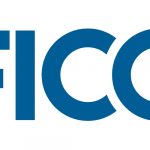
We are in a moment of great uncertainty in the mortgage market. While the worst of COVID-19 appears to be moving toward the rearview mirror as vaccines begin to roll out and local economies continue to reopen, the combination of the pandemic and the federal government’s relief measures have created more questions than answers for servicers.
Mortgage professionals anticipate a wave of complex work when the various forbearance programs and moratoria currently in place begin to expire and consumers, some of whom may not have made regular payments since March 2020, again bear the full weight of their existing loans. Fortunately, recent advances in the assessment of consumer credit risk offer more granular insights than have been available to policymakers and market participants in the recovery phases of prior economic shocks.
Servicers have long faced a thorny challenge: trying to manage what they can’t see. After more than a year of suspended payments, it’s hard to tell if borrowers will default and, if loans become delinquent, how consumers will respond. Despite major advances in credit risk assessment over the past three decades, servicers often find that many of the loans they thought would be fine ultimately pose the biggest challenges.
This uncertainty presents threats to the stability of the entire mortgage market. When a borrower defaults, both borrower and servicer must navigate numerous hurdles. For the servicer, a formerly profitable loan starts to generate losses. The servicer must hire more people, advance missed payments, and bear the cost of hiring the service providers needed to manage the loan. A 2019 study from the Mortgage Bankers Association found the cost of servicing a delinquent loan was more than 13 times the cost of servicing a performing one. Servicers also encounter potential regulatory, reputational, and investor risks from borrower delinquencies.
However, a new tool from FICO, the company behind the industry-leading FICO® Score, is designed to give servicers powerful new insights into a borrower’s risk to help them avoid delinquency. Known as the FICO® Resilience Index (FRI), it is designed to give market participants a sharper view of the ways consumer credit behavior changes under shifting market conditions.
While the FICO® Score is designed to predict a borrower’s overall likelihood of default based on past credit performance, FRI is built to specifically capture the incremental risk of consumers defaulting on their credit due to economic stress, whether from a macroeconomic downturn or more localized circumstances. Additionally, for consumers with near-prime and subprime credit scores, FICO has found FRI is predictive of a consumer’s recovery from apparent setbacks in their financial lives, demonstrated by successfully transitioning from delinquencies on one or more credit obligations to a state of no delinquencies.
This is a critical new layer of insight, because FRI reveals significant differences in the way that borrowers with similar FICO® Scores respond to financial stress. For example, a borrower with a 640 FICO Score but very high resilience may be less likely to default in a downturn than one with a 680 FICO Score but very low resilience. Resilience tends to be associated with how a borrower uses credit: highly resilient borrowers typically have fewer active credit accounts, more experience managing credit and fewer recently opened trade lines.
FRI was developed in part by comparing borrowers with similar FICO® Scores across normal and stressed macroeconomic scenarios. Using credit bureau data, FICO compared how borrowers with similar FICO Scores performed in response to the downturn between 2007 and 2009 and to normal conditions between 2013 and 2015. The results are striking: In every FICO Score band, delinquencies were concentrated among borrowers in the lowest-resilience quintile, and borrowers in the strongest quintile outperformed their low-resilience peers by a factor of more than four. FRI thus offers important new insight into borrowers’ default risk. Without it, servicers can miss latent risks that threaten their risk profile.
Equipped with these insights, servicers can take several steps to better manage default risk. The most obvious is early intervention. Even within investor guidelines, servicers have a choice: call the day after a missed payment or wait until the borrower has had a chance to cure. For resilient borrowers, waiting might spare precious resources for borrowers who really need help. But for low-resilience borrowers, there is a compelling business case for calling sooner rather than later: early engagement may head off delinquency or facilitate a modification in response to imminent risk. Servicers might also use FRI to manage staffing—a large population of resilient borrowers will likely require fewer staff, while servicers anticipating a macroeconomic contraction can calibrate staffing plans more precisely based on their borrowers’ resilience—or better anticipate borrowers’ needs when government assistance expires.
After a turbulent year, there is hope the end of the pandemic may finally be approaching the horizon. But the sunsetting of borrower support programs presents an entirely new set of questions for mortgage servicers. Adding the FICO® Resilience Index as a risk assessment toolbox is a critical step toward putting COVID-19 behind the mortgage market once and for all. For more information, please contact Joanne Gaskin, VP Scores and Analytics.

 theMReport.com Your trusted source for mortgage banking news
theMReport.com Your trusted source for mortgage banking news









